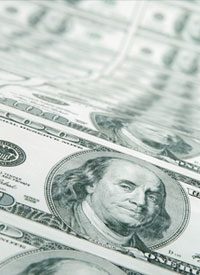
Back in the bad old days of the Great Depression, the breezy assurance of the Hoover Administration that “prosperity is just around the corner” became, as the years of depression dragged on, a mainstay of Vaudeville comedians and Hollywood screenwriters alike. As things turned out, elusive prosperity did not re-appear until after 16 years of depression and world war, and even then was not fully in evidence until after Congress finally removed all wartime price controls and slashed government spending by a third. An entire decade was squandered by eager-beaver social engineers in the Hoover and Roosevelt administrations, who could not be shaken from the notion that more government spending and controls on market activity could solve the economic crisis — a crisis that had been created by government in the first place.
Now, history appears to be repeating itself, as pundits, including Fed Chairman Ben Bernanke, confidently predict an end to the recession later this year — this despite the fact that the economy shed another 491,000 jobs in April. While we don’t want to rain on anyone’s parade, and will be happy to be wrong, there are all kinds of grounds for doubting that the current market upswing is anything other than a bear market rally. For one thing, there are all sorts of toxic assets still lurking on bank balance sheets, such as commercial real estate debt. For another, there are the immense deficits and multitrillion dollar national debt that the Bush and Obama bailouts have wrought, and the lack of political will to make any but a few inconsequential cosmetic cuts in government spending and tax rates (the 121 programs that President Obama, with great fanfare, has targeted for elimination amount to a mere $17 billion – a fraction of a percent of the whopping $3.6 trillion proposed Obama budget).
Then there are the banks themselves. The long-awaited results from the “stress tests” that the Treasury conducted on the nation’s 19 biggest banks reveal that about half of them are still facing balance-sheet shortfalls that make them technically bankrupt. Bank of America is $33.9 billion in the hole, and Citigroup is behind by $5.5 billion. The total amount still needed to save America’s money-center banks is reckoned at $75 billion, another immense sum that taxpayers will no doubt soon be asked to pony up. Some of the big banks, be it noted, are comparatively healthy; JP Morgan Chase has remained profitable despite buying up Bear Stearns and Washington Mutual.
The federal government will be giving the big banks a few months to do what they can to raise the money, but has already made it clear that it will bail them out if they fail to come up with the needed funds on their own. In other words: taxpayers can kiss another $75 billion good-bye.
To make matters (potentially) much worse, the “stress tests” assume a worst-case scenario of 10 percent unemployment, when in fact, the figure could be much higher by year’s end. Should that prove to be the case, the bailout money required to keep Bank of America and other foundering megabanks afloat will be much, much more.
In fine, the government is repeating the same glib assurances of a soon-to-come turnaround that our grandparents heard in the 1930s — even as policymakers commit the same errors that Roosevelt and Hoover did. Higher levels of debt, government spending, and government regulation only prolonged and worsened the depression 75 years ago, and will likely have the same results this time around.



